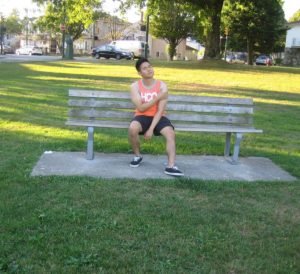A clavicle fracture involves damage to the clavicle bone that travels along the anterior of the shoulder up to the sternum in the center of the chest.
The clavicle is usually damaged from falls onto an extended arm or onto the shoulder itself. It can also occur during contact sports such as rugby or football. The risk is also higher when playing in hard surfaces.
Indications
An individual with a clavicle fracture usually have the following symptoms:

- Intense collarbone pain
- Swelling over the affected area
- Bony deformity can be felt
Management
If an individual is suspected with a clavicle fracture, it is vital to seek medical attention as soon as possible. In most cases, an X-ray is requested to confirm the damage. The arm is immobilized using the figure of 8 bandage, cuff, collar or a sling. Take note that the figure of 8 bandage is specifically designed to limit the shortening of the collarbone as it heals and usually the preferred choice.
During the initial phases, relief from pain is the objective where the doctor will prescribe pain medications. After a phase of immobilization, usually 1-2 weeks, the arm should be moved gently to prevent stiffness of the shoulder.
A rehabilitation program involves full range of motion with mobility exercises and stretching. Remember that the injury is likely to heal within 4-6 weeks. The individual should not engage in any sports or running up until the injury has fully healed. In some cases, the individual can exercise using a stationary bike.
Surgery is not usually needed for a clavicle fracture. When it comes to open fractures where the bone breaks through the skin or there is non-union of the bones after 6 weeks or more, surgery is usually needed.
More Information / Disclaimer
The information posted on this page on a posterior shoulder dislocation is for learning purposes only. Learn to recognize and manage joint injuries including dislocations by taking a standard first aid course with Saskatoon First Aid.
